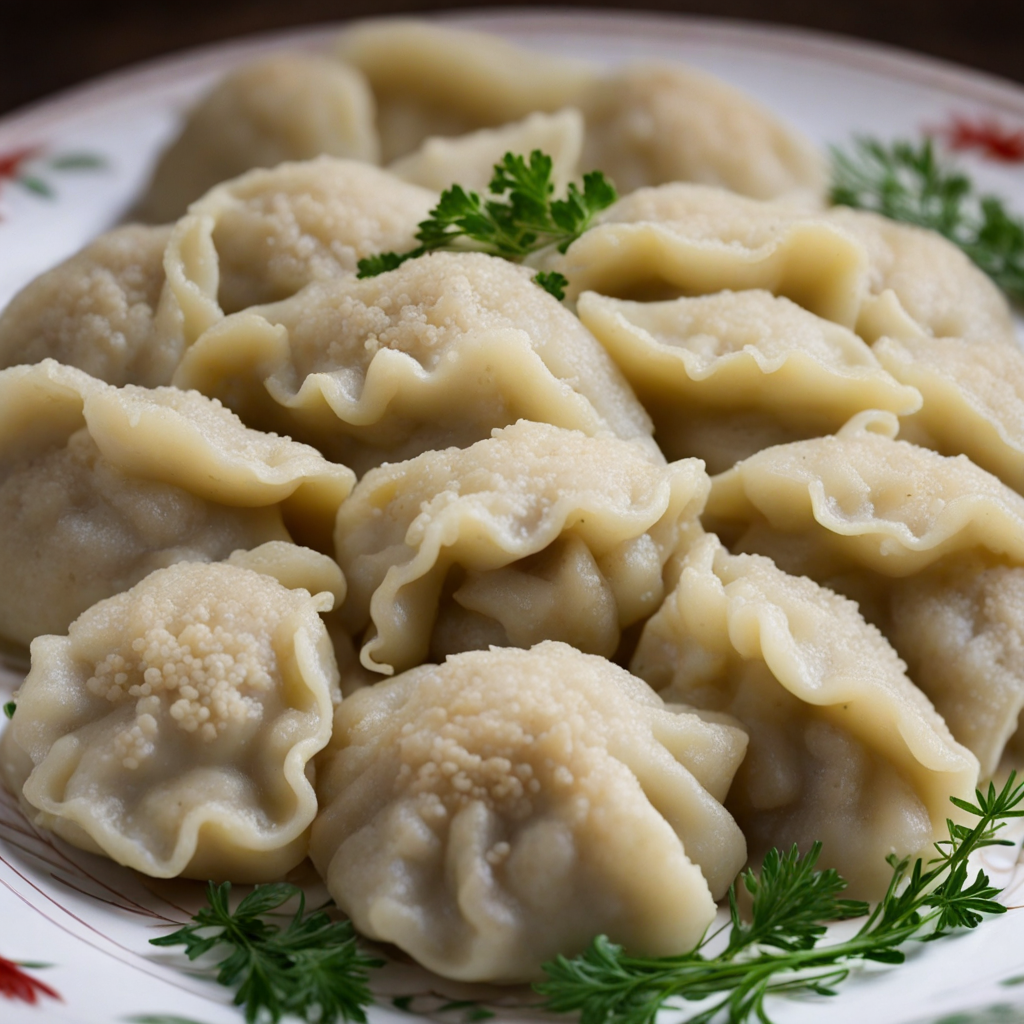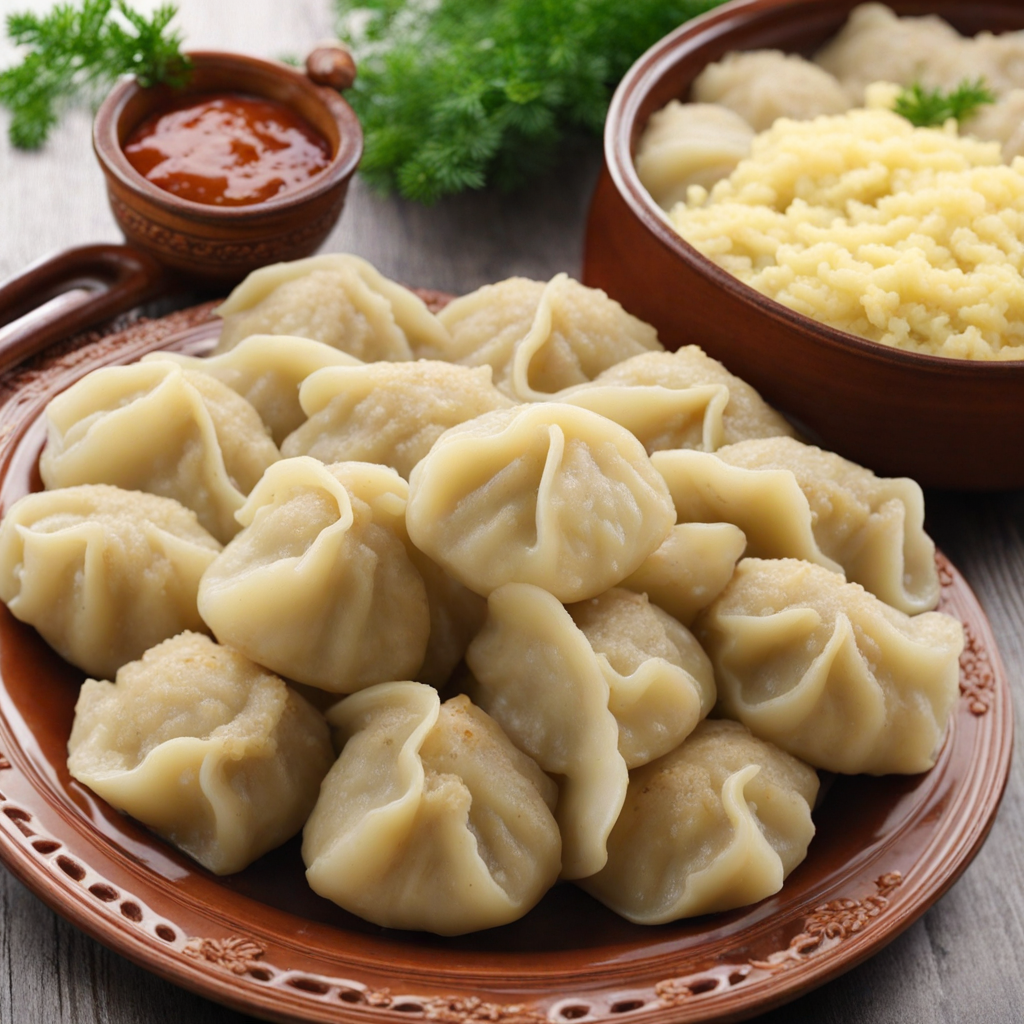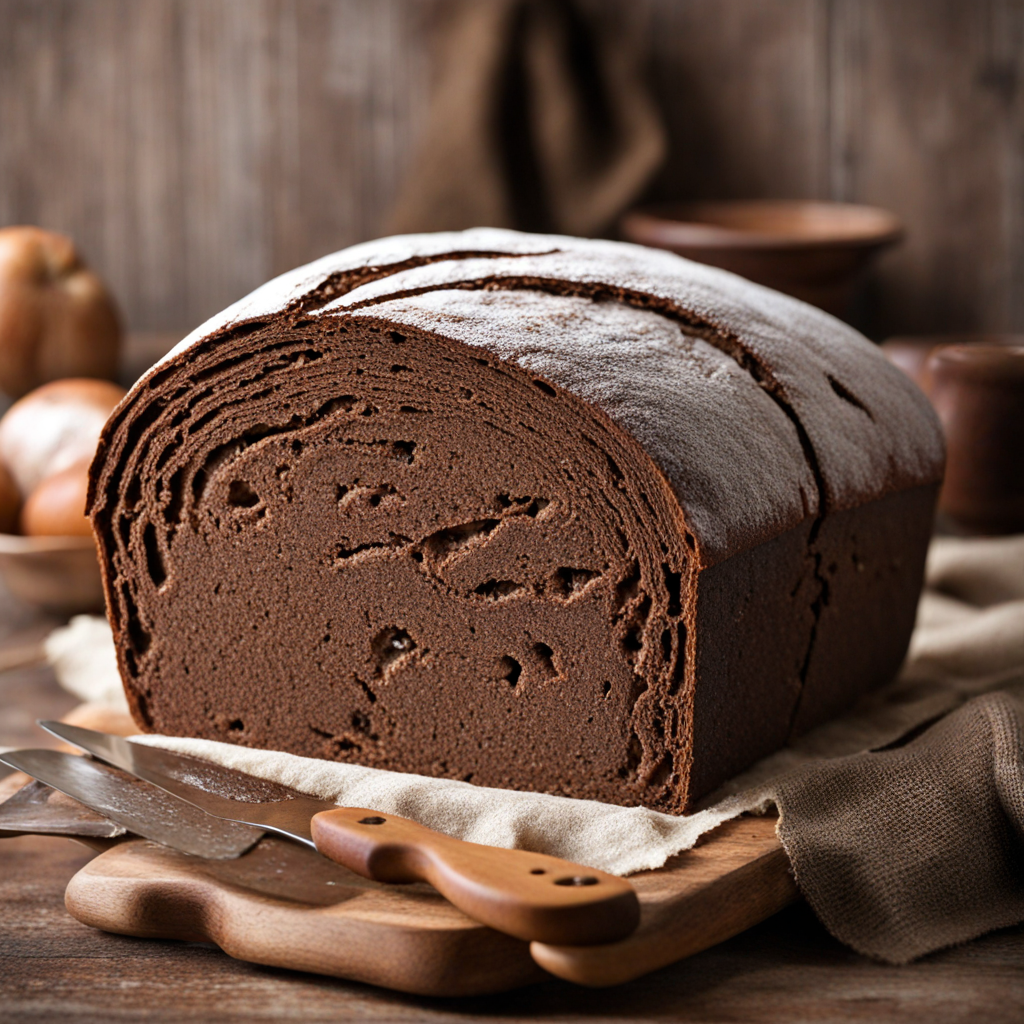Cepelinai
Cepelinai, also known as zeppelins due to their distinctive shape, are a traditional Lithuanian dish that embodies the heart and soul of the country's culinary heritage. These hearty dumplings are primarily made from grated potatoes, which are skillfully combined with a starchier potato base to create a dough that is both firm and tender. The dough is then filled with a savory mixture of minced meat, often pork or beef, seasoned with onions and spices, encapsulating a burst of flavor within each dumpling. Once shaped into their iconic elongated form, cepelinai are boiled until they reach a perfect softness, ready to be adorned with rich toppings. What truly elevates cepelinai is their generous topping of creamy sauce, typically made from sour cream, sautéed onions, and crispy bacon bits. This sauce adds a velvety texture and a tangy richness that complements the mild taste of the potato dumplings beautifully. The combination of the tender, starchy exterior with the flavorful filling and the luscious topping creates a symphony of flavors and textures that is incredibly satisfying. Each bite delivers a delightful mix of creaminess and savory goodness, making cepelinai a favorite comfort food among locals and visitors alike. While cepelinai is often enjoyed as a main dish, it can also be found in various regional variations throughout Lithuania. Some versions may incorporate different fillings, such as mushrooms or curd, catering to diverse palates and preferences. The dish is typically served alongside pickled vegetables or fresh herbs that enhance its taste and provide a refreshing contrast. Whether you're sharing a plate with friends or savoring it solo, cepelinai is an inviting dish that invites you to explore the warmth and tradition of Lithuanian cuisine.
How It Became This Dish
Cepelinai: The Heart of Lithuanian Cuisine Cepelinai, often referred to as "zeppelin" due to their distinctive shape, are a beloved dish in Lithuanian cuisine, revered for both their heartiness and cultural significance. These potato dumplings, stuffed with meat or curd, embody the history and traditions of Lithuania, reflecting the country's agricultural roots, social customs, and resilience through various historical challenges. Origins The origins of cepelinai can be traced back to the early 19th century, though the roots of stuffed potato dishes in Eastern Europe predate this time. The potato itself was introduced to Lithuania in the late 17th century, and its incorporation into local diets marked a significant agricultural shift. As potatoes became more widespread, Lithuanian cooks began experimenting with them, leading to the development of various potato-based dishes. Cepelinai are believed to have been inspired by the culinary practices of neighboring regions, particularly those of Poland and Belarus, where similar dumplings, such as "kartacze" (potato dumplings with meat) and "pyzy" (potato dumplings), are also popular. However, it is in Lithuania where cepelinai became a true cultural icon, evolving into a dish representative of national identity. The name "cepelinai" itself is derived from the zeppelin airship, due to their elongated shape. Cultural Significance Cepelinai are more than just a meal; they are a symbol of Lithuanian identity and hospitality. Traditionally served on special occasions, including weddings, holidays, and family gatherings, they reflect a sense of community and togetherness. The preparation of cepelinai is often a communal activity, with family members gathering to peel, grate, and fill the dumplings, a process that fosters bonds and preserves traditions. In Lithuania, food is often intertwined with folklore and celebrations. Cepelinai have made their way into cultural narratives, often featured in stories and songs that celebrate Lithuanian heritage. During the Soviet era, when Lithuania was under oppressive rule, cepelinai became a comfort food, a nostalgic reminder of home and cultural identity. The recipe was passed down through generations as a form of resistance to cultural homogenization, reinforcing the idea that food can be a powerful symbol of national pride. Development Over Time As Lithuanian society evolved, so did cepelinai. The dish has undergone various transformations, adapting to changing tastes and the availability of ingredients. Traditionally, cepelinai were filled with minced meat, typically pork or beef, but over time, vegetarian versions emerged, often filled with curd, mushrooms, or even sauerkraut. This adaptability speaks to the resilience of Lithuanian cuisine, which, like its people, has learned to thrive in varying circumstances. In the post-Soviet era, as Lithuania regained its independence in 1990, there was a resurgence of interest in traditional foods. Cepelinai, with their rich history, became a focal point in the movement to reclaim and celebrate Lithuanian culture. Restaurants began to feature cepelinai prominently on their menus, often presented with modern twists or gourmet interpretations. Chefs started experimenting with different fillings and sauces, pairing cepelinai with contemporary ingredients while maintaining their traditional essence. Cepelinai are typically served with a creamy sauce made from sour cream, fried onions, and sometimes crispy bacon bits, which adds richness to the dish. This combination not only enhances the flavor but also highlights the importance of dairy in Lithuanian cuisine, reflecting the country's agricultural practices and its reliance on dairy farming. Modern Day Today, cepelinai continue to be a beloved staple in Lithuanian households, often enjoyed during family meals or festive gatherings. They have also gained international recognition, appearing in Lithuanian restaurants around the world, from the bustling streets of Vilnius to the vibrant neighborhoods of Chicago, where Lithuanian-American communities celebrate their heritage. The dish has also found its way into the culinary conversation beyond Lithuania, as food enthusiasts and chefs worldwide discover the unique flavors and textures of cepelinai. Festivals celebrating Lithuanian culture often feature cepelinai as a highlight, showcasing the dish's significance not just as food but as a cultural artifact. Moreover, in the age of social media, cepelinai have become a visual representation of Lithuanian cuisine, with food bloggers and influencers sharing their experiences of making and enjoying the dish. This has contributed to a renewed interest among younger generations in their culinary heritage, fostering a sense of pride and a desire to keep traditions alive. Conclusion Cepelinai are much more than a simple potato dumpling; they are a testament to Lithuania's rich history, cultural identity, and the resilience of its people. As a cherished dish, cepelinai encapsulate the essence of Lithuanian hospitality and communal spirit, making them an integral part of the nation’s culinary landscape. From their origins to their modern-day evolution, cepelinai continue to remind us that food is not only sustenance but also a powerful medium for storytelling and cultural preservation. As Lithuania continues to navigate the complexities of the modern world, cepelinai will undoubtedly remain a beloved symbol of national pride, bringing people together one dumpling at a time.
You may like
Discover local flavors from Lithuania







